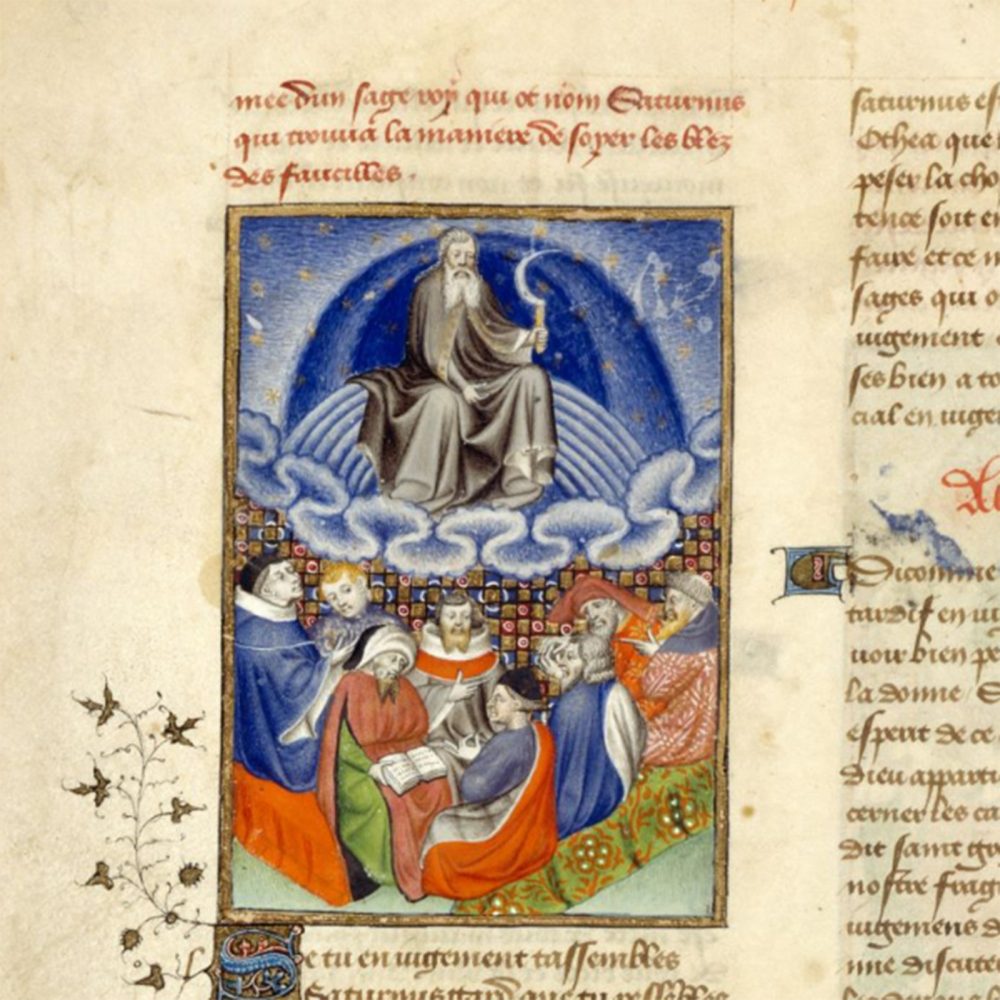
Commentaries are often a key vehicle of pedagogical instruction. By exploring the social practices that govern the relationship of master and student, seeking to understand the scholarly communities that employed commentary, we discover common practices and striking differences — not only within the written commentaries themselves, but also in the power relations, institutional structures, and disciplinary formations that the genre of commentary reveals.
Above image: British Library. Harley MS 4431, fol.100r. Christine de Pizan, Collected works (‘The Book of the Queen’), c. 1410–c. 1414. Source: http://www.bl.uk/manuscripts/FullDisplay.aspx?ref=Harley_MS_4431
Background image: British Library. Egerton MS 872, fol. 199r. Pentateuch with the Hafṭarot, Five Scrolls, and Rashi’s commentary, 1341.Source: http://www.bl.uk/manuscripts/FullDisplay.aspx?ref=Egerton_MS_872